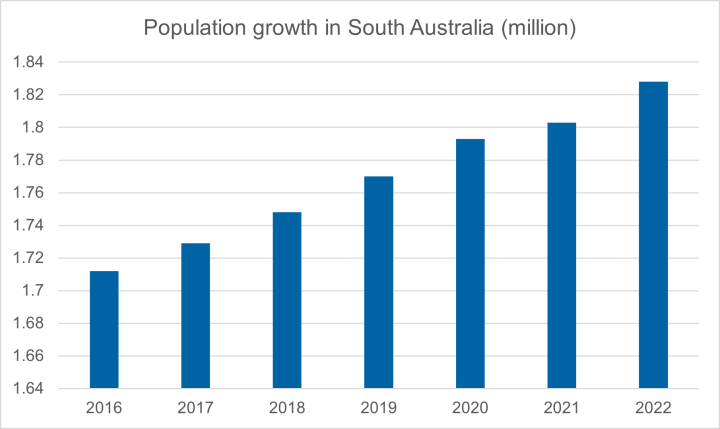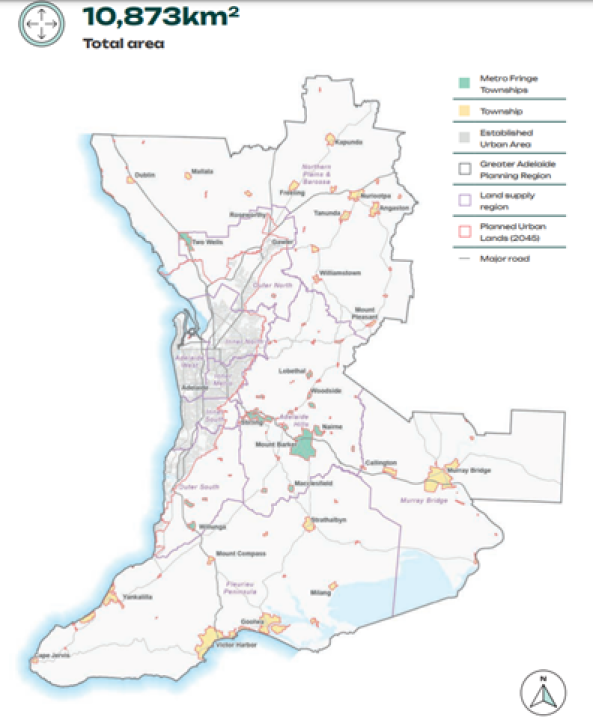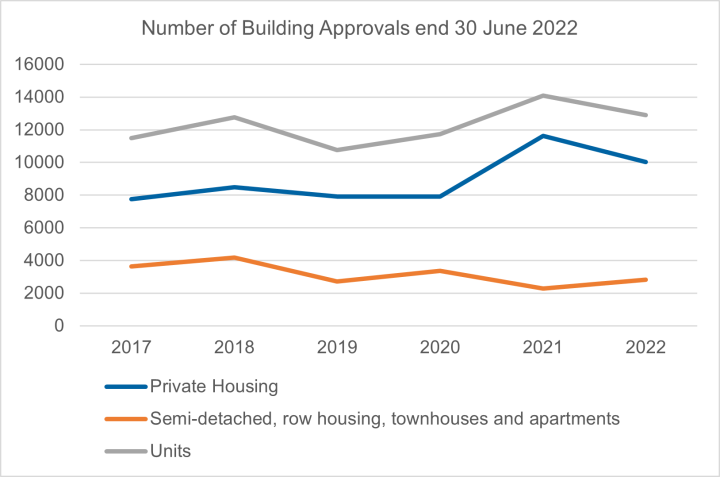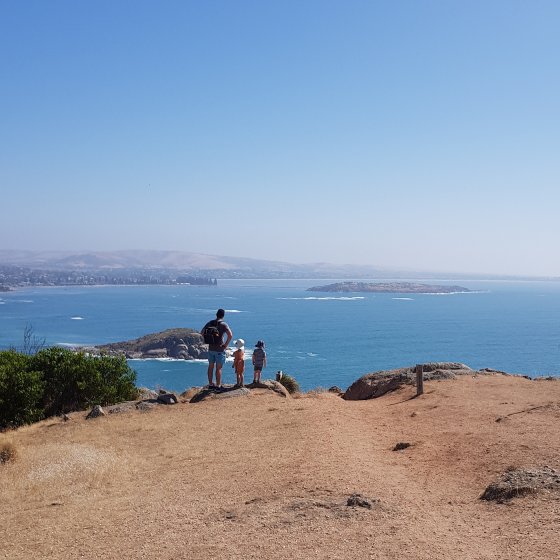- Home
- Environmental Themes
- Liveability
- Population
Population
Growth
Human activities and climate change are the most significant pressures on the liveability of our environment. Both will be affected by population growth.
With a growing population, we need to consider:
- water and food security, especially in the face of climate change
- preventing the reduction of green space, natural environments and primary production areas when designing urban infill and expansion. This will benefit biodiversity, reduce heat islands and affect our supply of critical resources (eg food, water and fibre) and industry sectors
- how the expansion of industry sectors required to support a growing population will impact on our environmental footprint
- the potential for increased emissions from transport and other sources that are influenced by human activities
- that increased population means more waste and wastewater that needs to be treated for reuse and potentially disposed of.
The 2021 census indicated that South Australia’s population was 1,828,700, with 84% residing in Greater Adelaide. This is a 6% increase in 6 years. The majority of population growth was from overseas migration. The estimates that Adelaide’s population could grow by up to 670,000 people over the next 30 years.
The fastest growing local government areas were Adelaide Plains (4.9%), Mount Barker (3.6%) and Gawler (3.2%). Regional South Australia experienced high growth rates in many coastal local government areas, including Copper Coast (2.1%), Alexandrina (1.8%) and Victor Harbor (1.8%).


An increasing population requires somewhere to live. Building approvals for housing have increased slightly over the past five years, with a slight decline experienced between 2021 and 2022. Approvals for units remained stable.
The 2021 Census also counted 723,000 occupied private dwellings across South Australia. This was an increase from 674,000 in 2016 and 342,000 in 1971. Most people live in separate houses (78.0%), rather than flats, apartments or other dwelling types.

Infrastructure SA has produced a 20- Year State Infrastructure Strategy to help identify our infrastructure needs to support our growing communities and industries. This strategy is currently being reviewed by Infrastructure SA to guide state government infrastructure decisions until 2045.
The South Australian Government has released its discussion paper on the Greater Adelaide Regional Plan, which aims to collate feedback for informing the shape and future of the Greater Adelaide region, including what aspects need to be considered to support the sustainable growth of Adelaide’s population. This recognises that South Australia will require a further 300,000 new homes by 2051, with current capacity for land zoning only enabling a further 200,000 homes. Space for a further 100,000 homes is required either via infill or finding suitable greenfield land for development. Consideration needs to be given to public transport needs for proposed developments located a distance away from the CBD and ensure that green space and natural biodiversity corridors are maintained for both greenfield development and urban infill. Consultation for this discussion paper closed on 6 November 2023.
Well-planned cities, towns and infrastructure can minimise environmental impacts and create more sustainable living environments. Incorporating efficient transportation systems, green spaces, biodiversity and water sensitive urban design (WSUD), appropriate waste and wastewater management including supporting circular economy, sustainable building and energy-efficient building construction and design can reduce pollution and energy consumption and promote a higher quality of life for the community. Planning also needs to consider mitigation and preparedness for disaster risks to reduce exposure and vulnerability of communities to these events.
Impacts relating to urban sprawl and infill accounted for most of the concerns raised by the SOER 2023 YourSAy survey respondents. Reduction of green space resulting from development and lack of effective protection measures implemented to protect our environment were also key issues of concern.
Aboriginal Communities
The health of Country for Aboriginal peoples is extremely important. Country for Aboriginal people sustains life in every aspect. It goes beyond just health and wellbeing. Aboriginal people see themselves as belonging to Country and every aspect of themselves and life is holistically interconnected and as one with Country.
The 2021 census indicated there were 42,562 Aboriginal and Torres Strait Islander peoples living in South Australia. This has increased from 30,432 recorded in 2011 and 34,181 in 2016.
In 2019, 66% of Aboriginal and Torres Strait Island peoples identified with a tribal group, language group, clan, mission or regional group, and 71.3% recognised an area as homelands/traditional country. Yet only 14.3% of Aboriginal and Torres Strait Island peoples lived on their Country.
A Liveable Environment
Humans rely on a healthy environment for their health and wellbeing. Our environment provides services that are necessary to sustain life as we know it. This includes:
- provisioning services such as water, food, fibre, fuel and minerals
- regulating services such as climate, flood and drought mitigation, water purification, pollination, disease and pest regulation and control
- cultural services such as recreation, health and wellbeing, aesthetics and heritage
- supporting services such as soil formation, nutrient cycling and primary production.
An unhealthy environment is going to impact the environment’s capacity to deliver these services. It is important that we recognise these services are not infinite and take care of our environment so it takes care of us. This requires commitment, education, support and resourcing.
Distinguishing between urban, rural and peri-urban environments is based on population density, the presence of human-made infrastructure and the degree of natural surroundings, each offering different lifestyles, opportunities and challenges.
- Urban environments are typically characterised by higher population density, extensive human-made infrastructure such as buildings, roads and transportation systems, and a concentration of economic and social activities.
- Rural environments are characterised by lower population density, larger areas of open land and a closer connection to natural surroundings. Rural areas are often dominated by agricultural or natural landscapes, with smaller communities and a slower pace of life. They may have fewer amenities and services compared with urban areas, but they often offer a more tranquil and close-knit community atmosphere.
- The peri-urban environment is the transitional zone between urban and rural areas. It represents the interface where urban development meets and interacts with rural or natural areas. Peri-urban areas often experience the effects of urbanisation, such as encroachment of buildings and infrastructure upon rural landscapes, changes in land use patterns and conflicts between urban and rural interests. These environments face unique challenges relating to managing population growth and maintaining a balance between urban development and the preservation of rural or natural resources.
The Planning and Design Code became fully operational in 2021 and includes policies relating to:
- new residential infill to encourage incorporation of tree planting, soft landscaping and stormwater detention and reuse into residential development
- encouraging water sensitive urban design for commercial, master planned residential and infill development
- new native vegetation overlays to ensure removal is considered up-front in a planning assessment
- promotion of walkable communities by encouraging a greater mix of land uses in suburban areas and a continued focus on infill development in well-serviced locations
- opportunities for both policy and spatial updates to the Code to be investigated.
Regional plans are currently being prepared by the State Planning Commission to spatially apply the Planning and Design Code. There will be six country regional plans and a plan for Greater Adelaide. Environmental considerations and liveability are relevant to these plans. Infrastructure SA is also preparing the next 20-Year State Infrastructure Strategy that prioritises infrastructure requirements that will sustain or enhance the liveability of South Australia. This includes roads, rail, ports, housing and facilities associated with health, culture, sports, tourism, education, energy, water and waste utilities.
The Expert Panel Review in relation to the Planning System Implementation Review, under the Planning, Development and Infrastructure Act 2016, has been completed. The review provided recommendations on the Planning and Design Code and related instruments including urban tree cover, which is an important consideration in urban liveability. The government's response has not been released yet.
Further Reading
- Built Environment and Health 2022 – Information from Australian Institute of Health and Welfare on what influences our health.
- Health and the Environment: A Compilation of Evidence 2011 – Assessment of the influence of 15 environmental factors on the health of humans.

